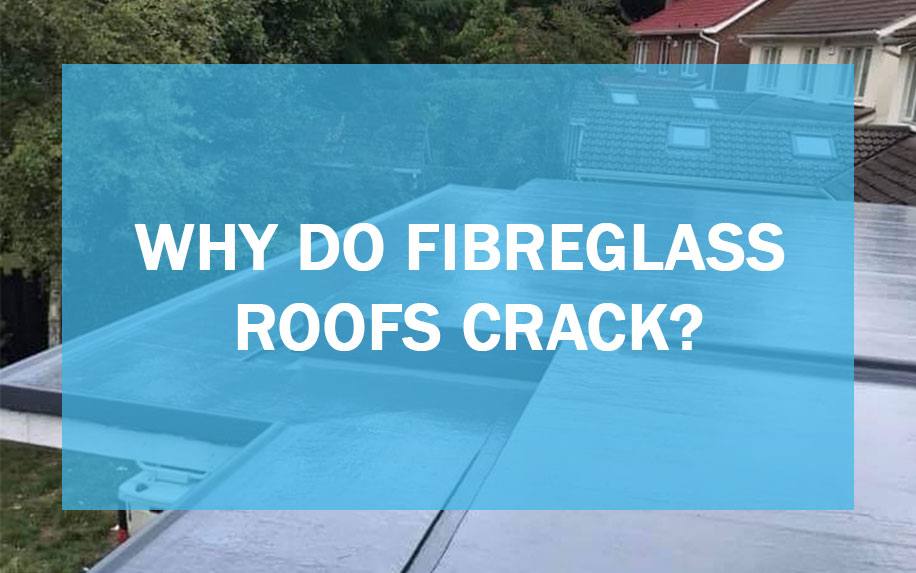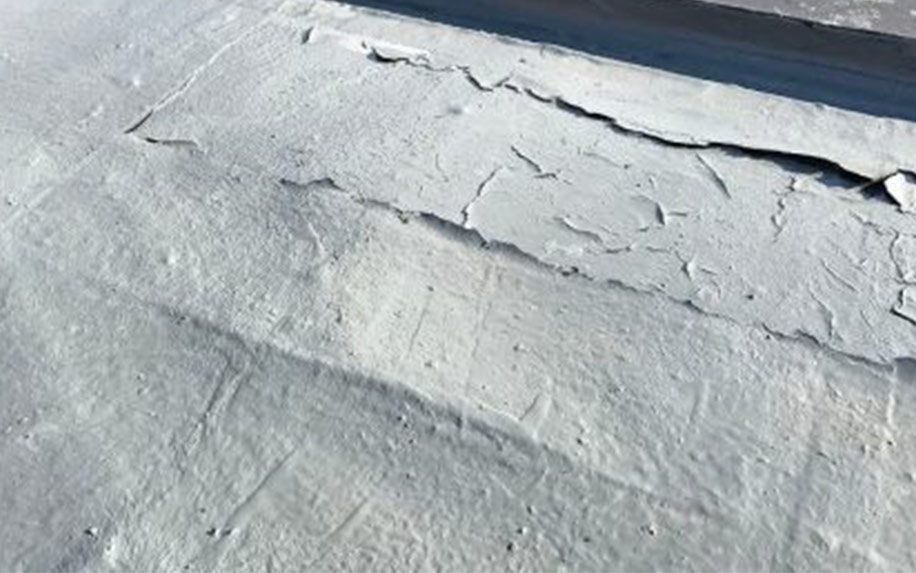

Fibreglass roofs are growing in popularity because of their long-term strength and reliability. A large part of this is resistance to things like footfall, weather and impact. However, issues do occasionally occur.
In this article we’ll answer a simple question – why do fibreglass roofs crack?
There are a lot of misconceptions out there about roof cracks. If you aren’t a fibreglass specialist, you could be forgiven for thinking that cracks are a result of strikes or falling objects. However, this is almost impossible.
With that in mind, let’s look at fibreglass roof cracks in more detail and bust some myths.
Understanding Why Fibreglass Roofs Crack
The vast majority of the time, cracks in a fibreglass roof are a result of poor installation. The tricky thing here is that anyone can go into a DIY shop and purchase the materials they need to attempt to install a fibreglass roof.
But this does not mean that just anyone can perform an installation correctly.
Roofs of all kinds have to withstand changes in ambient temperatures. Like all materials, the various layers of a fibreglass roof expand in the heat and contract in the cold. When the roof is installed, this must be accounted for.
Specifically, the right expansion gap must be left between the roof deck and surrounding walls, as well between different sections decking. These are then covered using expansion joints.
If an inadequate gap is left, the roof does not have the space it needs to expand and contract. This puts excess pressure on the roof itself, causing cracks to emerge in the topcoat.
Additionally, if the topcoat is applied too thickly during installation, there is an even higher chance of your fibreglass roof cracking. Again, an overly thick topcoat is not able to expand and contract sufficiently with changes in conditions.
How to Identify a Crack in a GRP Roof
The sooner you find a crack after it develops, the better. As we mentioned, cracks can indicate that the roof wasn’t installed properly, meaning there may be other issues. Cracks can also develop into more serious issues down the line.
As such, it’s vital that your roof is inspected regularly to look for cracks and other visible problems.
Most cracks should be visible with the naked eye. You’re essentially looking for areas where the topcoat appears to be splitting. This is generally not a neat line, so it should be fairly easy to spot.


You might also notice areas where the top coat of your fibreglass roof has a flakey appearance. This can indicate the same issues as cracking.
Alternatively, if you fail to inspect your roof regularly, you may begin to notice other problems which can indicate that there is a problem with cracks. The most obvious among these are leaks and ceiling mould.
What Happens if You Leave a Crack Untreated?
When left untreated, cracks can develop into a range of more serious roof problems, even where the roof is otherwise sound. For one thing, the longer a crack is left, the more difficult it will be to repair.
For another, cracks can easily lead to water ingress and leaking roofs, as the outer layer of waterproofing is compromised. This can also lead to problems with the other layers of your fibreglass roof, which may require a total reinstallation.
It also can’t be emphasised enough that cracks are an indicator that a fibreglass roof has not been installed correctly. This may indicate that other problems are also likely to occur, stemming from poor installation practices.
For example, if a roofer did not exercise enough attention to detail to add a sufficient expansion gap, there is a good chance that they also did not pay attention to other precise taks, like creating the fibreglass laminate.
As such, cracking can often be a strong indicator that a fibreglass roof is generally not sound.
What to Do if You Find a Crack in Your Roof
If you read online, you’ll find multiple sources telling you that cracks should be repaired by removing and reapplying the topcoat on the affected area. There is some truth to this, but it is far from the whole truth.
That is, if cracking occurs because the topcoat was applied too thickly in one isolated area, then this is a perfectly acceptable solution. If the entire topcoat is too thick, then recoating the whole roof is also a sensible fix.
The problem is figuring out the exact cause of cracks in a fibreglass roof.
As we know, cracks can also indicate that a roof’s decks were also installed incorrectly. If this is the case, reapplying the top coat will only treat the symptoms of the underlying problem. This is a bad use of time and money.
As such, when a crack is found, it’s important to consult with a professional fibreglass roofing specialist. If your roof is covered by a guarantee, you should be able to have any necessary repairs carried out by the original contractor.
If your roof is not guaranteed, or you have acquired a property with a compromised fibreglass roof, it’s best to seek out advice from a reputable and product-certified roofing contractor.
How to Prevent a Fibreglass Roof Cracking
As we said at the outset, cracks primarily occur when a fibreglass roof has not been installed properly. This includes DIY jobs as well as cowboy builders. As such, the only sure fire way to prevent cracks in a fibreglass roof is to leave installation to the experts.
Additionally, modern fibreglass roof technology greatly reduces the risks of cracks appearing. For example, Dryseal systems are mechanically assembled onsite, reducing the possibility of issues emerging from poor expansion gaps.
Similarly, RES-TEC roofing products offer industry leading crack-resistance, as well durability and strength.
Nationwide fibreglass have been providing high-quality, reliable roofing solutions all over the island of Ireland for over 12 years. In this time, we’ve provided countless commercial and domestic clients with reliable fiberglass roofs, which remain problem-free for several decades.
To discuss your next roofing project, get in touch with our team of experts today.
